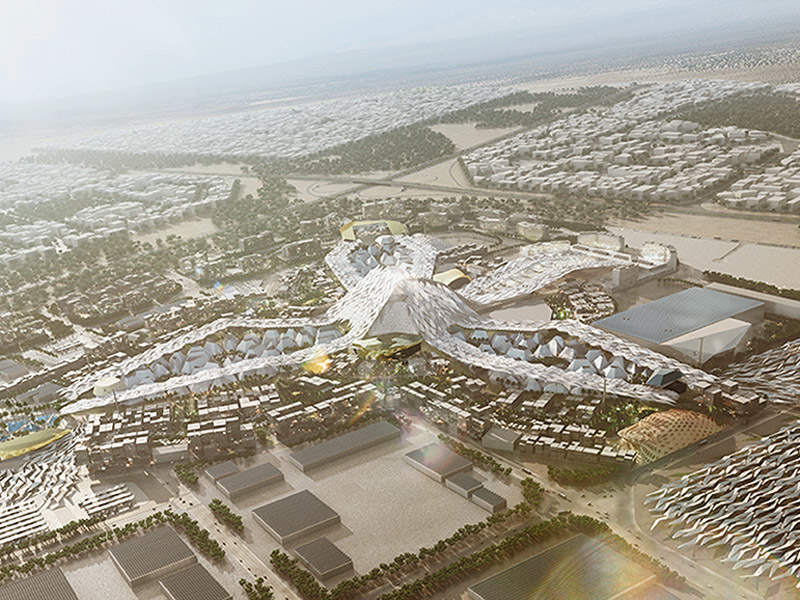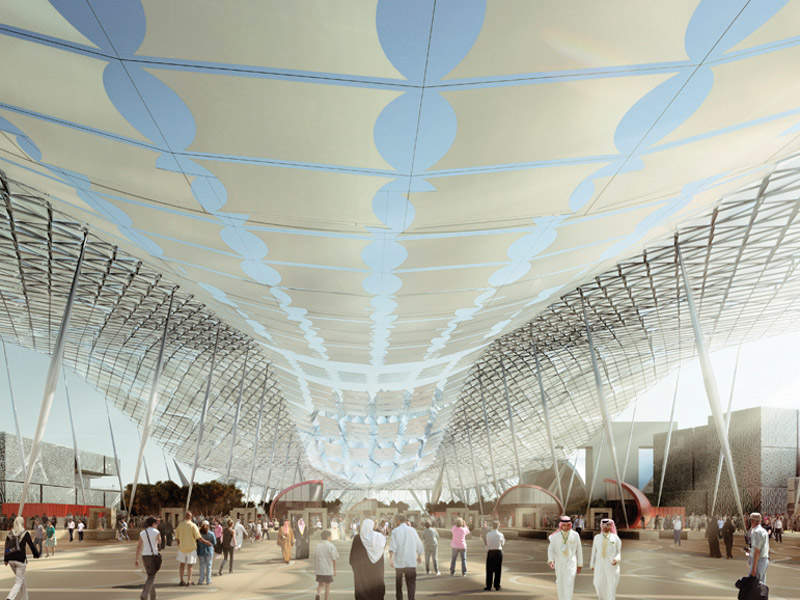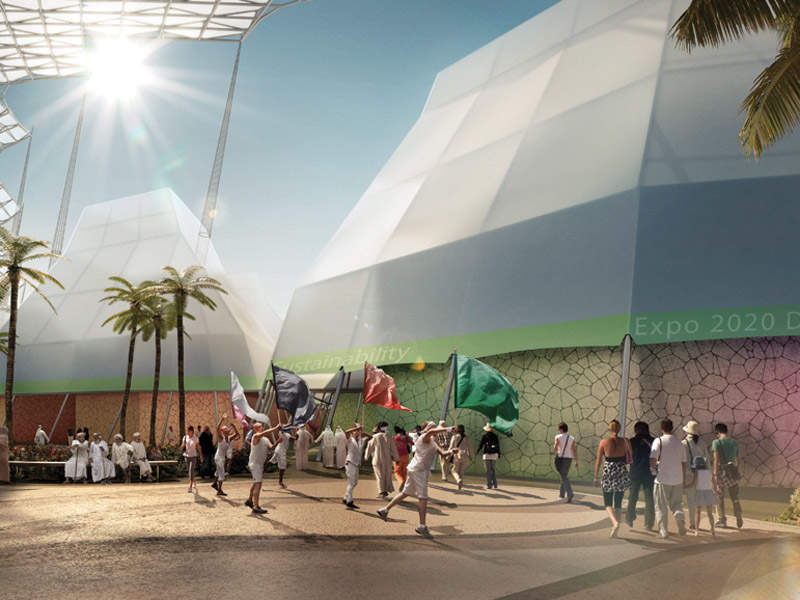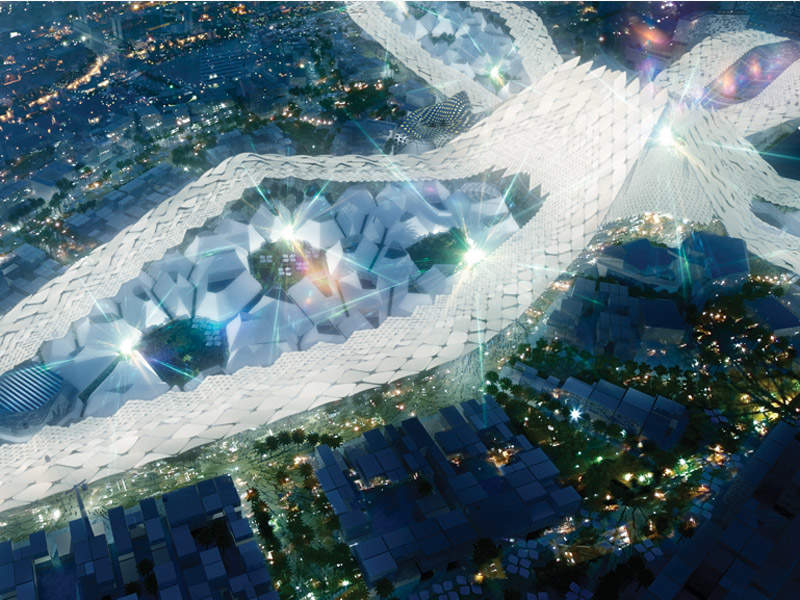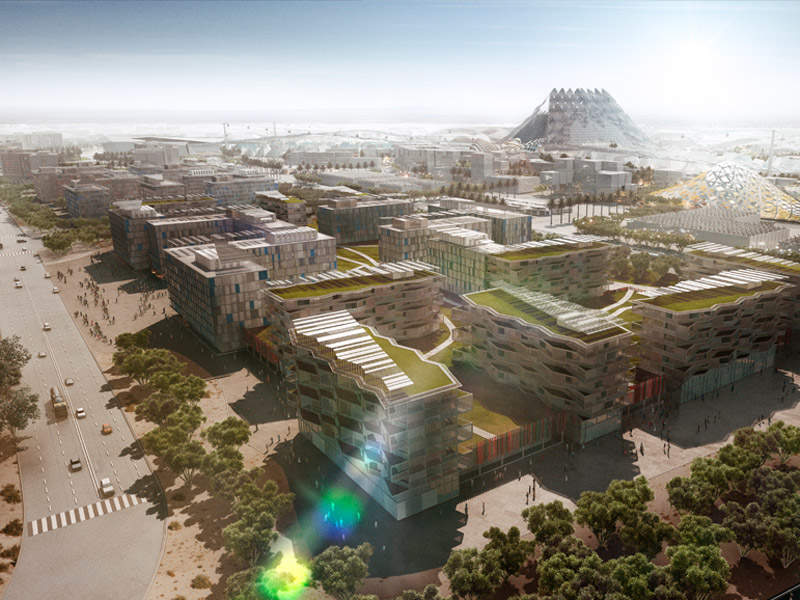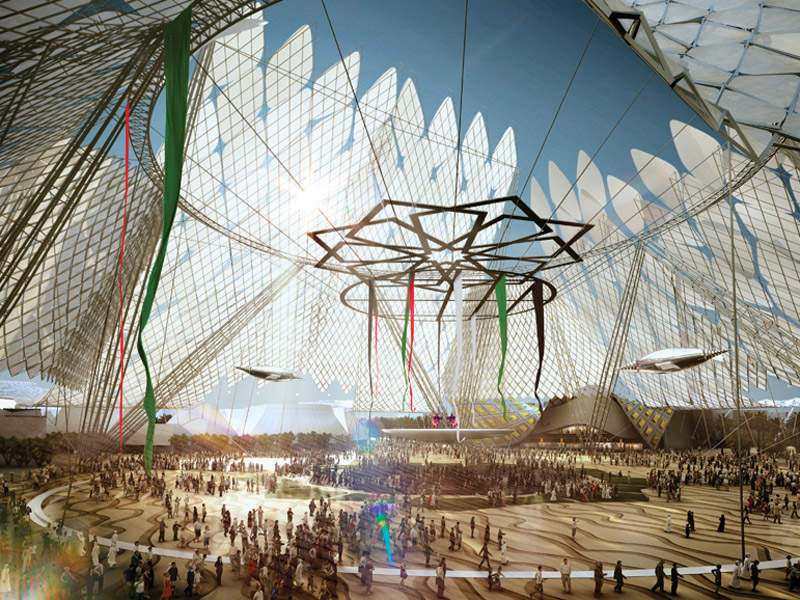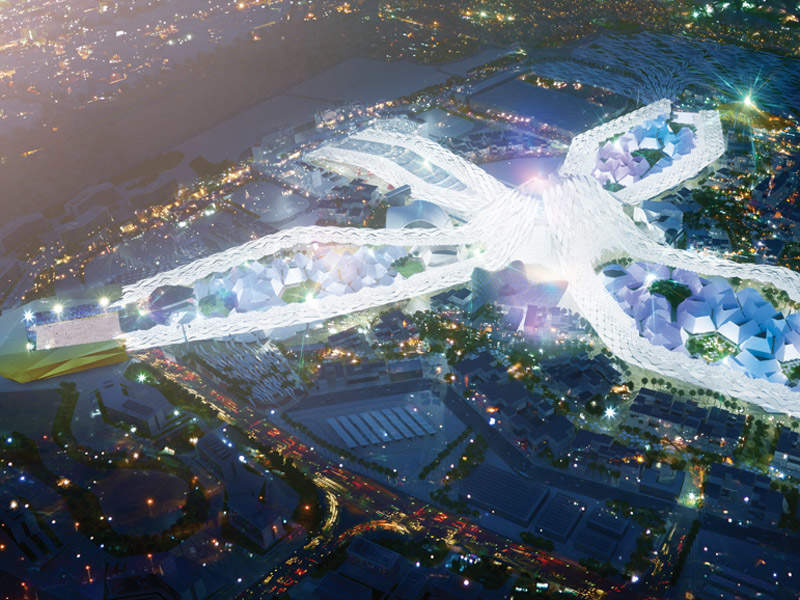HOK has designed a master plan for the Dubai Expo 2020 event, which will be held for the first time in the MEASA (Middle East, Africa and South Asia) region from October 2020 through April 2021 and could potentially attract 25 million visitors.
With a mix of education, innovation and entertainment, the expo’s ‘Connecting Minds, Creating the Future’ theme was selected over three other entries from Brazil, Russia and Turkey.
The world’s third-largest event after the Olympics and the FIFA World Cup, Dubai Expo 2020 will coincide with the country’s Golden Jubilee celebration and will highlight the Emirati culture on a world stage. The event’s infrastructure and operational costs are estimated at $88.47bn, with approximately $35bn worth of contracts expected to be awarded for construction and other supplies.
The event is expected to create more than 275,000 jobs in associated sectors and raise $20.14bn for the economy.
Building work on the expo site is scheduled for completion by October 2019, allowing a year to conduct readiness testing across networks, systems and technologies. Construction of the pavilion is expected to start in 2018.
Location of Dubai Expo 2020
The expo will take place on a site located on the south-western edge of Dubai in Jebel Ali, equidistant between Dubai and Abu Dhabi. It will be close to Dubai’s new Al Maktoum International Airport and Jebel Ali Port, as well as two other international airports.
Major locations will be connected through a dedicated transport network, which will provide easy accessibility for the spectators. The main central plaza of the expo, Al Wasl, will be a 15-minute walk from any corner of the site.
The location has been selected to cater to 300,000 visitors, with average week-day attendance expected at 153,000. It will also provide easy access to Sheikh Zayed Road, the Dubai Bypass Road and other main city expressways.
Dubai Expo 2020 master plan design
The design of the expo site draws inspiration from the traditional Arabic souk or marketplace. Large pavilions will be placed at the perimeter while smaller ones are close to the centre, encouraging interaction and allowing pedestrians to easily move through different exhibits.
The expo will offer meeting spaces for participants, innovators and policymakers worldwide. Three pavilions will be located in the Al Wasl central plaza, echoing the themes of opportunity, sustainability and mobility.
Each of the pavilions is designed to include innovation pods and best practice areas that will showcase cutting-edge technology and innovations.
Facilities at Dubai Expo 2020
The gated 370-acre expo area sits on a 1,082-acre site that includes a residential, hospitality and logistics section. An expo village will function as residential community development, offering full-time housing facilities to staff from participating countries.
A gondola will link the different pavilions and also the main entrance while providing a viewing opportunity for the visitors. The Dubai Metro will add a station dedicated to the expo site, encouraging the use of public transportation while also improving connectivity. A low-emission bus service will be launched to transport visitors to the expo from various collection points.
The three main pavilions will be combined to establish a National Museum celebrating the expo’s achievements.
Sustainable features of Dubai Expo 2020
The expo aims to meet at least 50% of the site’s energy requirements for renewable resources.
A photovoltaic fabric structure provides shade on the main walkways and works in tandem with photovoltaic panels on building facades to capture and generate energy from sunlight. The fabric will change into an illuminated display of lights and digital projections at night.
Wastewater from the site will be recycled to attain a 25% reduction in water consumption at the expo site. A resource and waste management strategy has been formulated to reuse materials and promote recycling during construction.
Strategic landscaping of the area will provide protection from the sun at the smaller connecting streets.
Key players
Populous provided services for venue planning, shade structure and participant design guidelines. Arup collaborated on the master plan design by providing infrastructure and transportation services.

